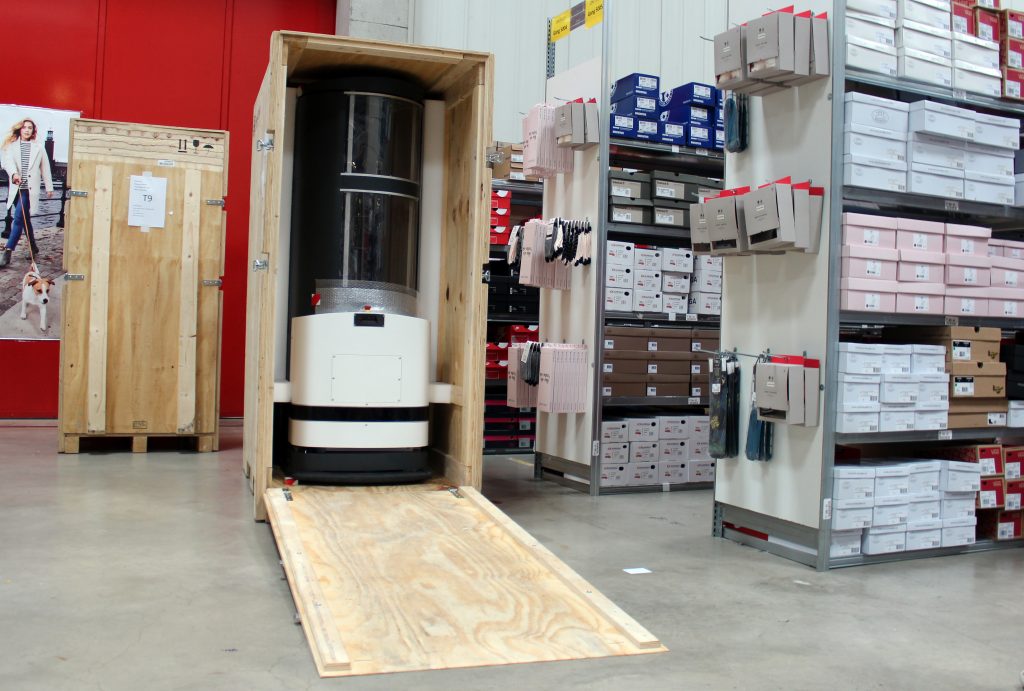The next step towards a digitised warehouse in Ibbenbüren
Ibbenbüren, 12th of October 2016. Three order-picking robots have taken up service at Fiege Logistik in Ibbenbüren. A four-member developer team from the Munich robotics start-up, Magazino, have started putting the robots into operation. The three TORU Cube robots are to pick online orders for footwear. Tobias Hepke, branch manager of the Fiege Mega Center Ibbenbüren, is pleased about the addition to the team and says: “I find the topic extremely exciting and am thrilled that together we are advancing robotics for applications in intralogistics here.”
During the first weeks after the arrival of the robots the software developers will design a map of the area of application and of the surroundings and will start with first navigation and grab tests. Moritz Tenorth, the head of Magazino’s software department, described the requirements for this as excellent: “The warehouse is very structured and tidy, the racks are well placed – this makes the robot’s first steps in its new surroundings so much easier.”
Picking of boxes for shoes ordered online
The interconnected robot features a 3D camera and a laser which allows it to scan its surroundings. In a first step, the software developers will help the robot to find its way around the warehouse so that it can determine its position and drive to the individual spaces. Once there, it is to grab a shoebox from the rack and place it onto a picking trolley.
The robot projects a laser cross onto the shoebox, enabling it to measure the distance to the item and direct the arms accordingly. The smooth surface of a shoebox is ideal for this, but still, the developers had to solve a few problems. “For example, if the cross is partially projected onto the box’s lid and that lid protrudes a little, there is a shift in the cross’ depth”, explains Tenorth. The robot had to be taught new ways to recognise this.
Integration of robots into logistical flows
But no one shoebox is like the other. Some shoeboxes are perforated, others have a lid that protrudes significantly and yet others even have a handle on the side. “We tend to look at a shoebox as something rather simple, cuboid. In reality, however, the environment presents itself much more complex to the robot”, says Tenorth. Until the robots can work together with people in the warehouse in Ibbenbüren, a few more weeks are likely to pass.
“I am really looking forward to when the robots have been integrated into the logistical flows here, and are connected to our interfaces”, says Tobias Hepke. And there is more: “I hope to gain further support for our work, but one thing is certain: robots will not be able to replace our employees. However, they can support our employees and are a further element on the road towards a digitised, transparent warehouse.”
